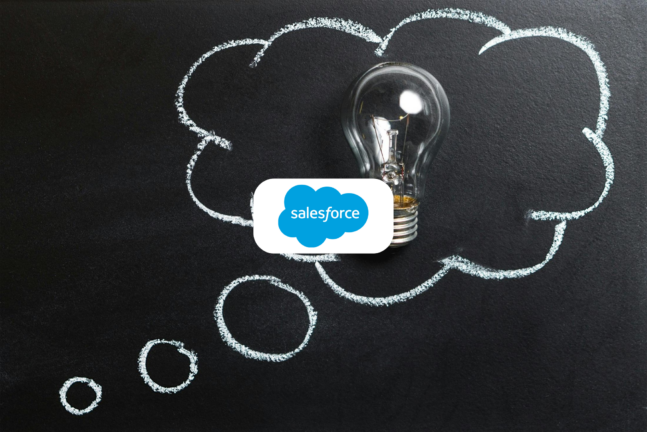In today’s highly competitive business world, it might be surprising to hear that 95% of new products fail. To avoid being part of this overwhelming majority, companies must understand their customers and marketplaces. Imagine you're a product developer or manage customer research to steer your company's product and service strategy. Which scenario would you prefer?
Option A: Engage customers who think your products and services are indispensable and want more, open emails you send because they want to hear what your company has to say, readily give feedback when asked, and advocate to others for the company.
Option B: Dismissive customers who feel indifferent to your products and services and wouldn’t care if the company went out of business, ignore communications from the company, disregard requests for feedback, and badmouth the company to others.
Common sense and data suggest that any business leader would favor option A. Engaged customers are invaluable to the bottom line. Companies that effectively engage their customer's experience:
- Higher sales: Companies with highly engaged customers report up to 20% higher sales compared to their competitors. These customers are more likely to make repeat purchases, accept cross-sells and upsells, and spend more with the brand.
- Higher profitability: Highly engaged customers purchase 90% more often and spend 60% more per transaction.
- Lower churn: Successfully engaging customers leads to 63% lower customer attrition
- Higher wallet share: Engaged customers contribute to a 55% higher share of wallet.
Unfortunately, many companies interact with their customers in ways that harm rather than enhance engagement. Common pitfalls include:
- Avoiding customers altogether: Relying on third-party samples instead of engaging directly with their own customers, companies miss opportunities to gather genuine feedback. Instead, they depend on input from paid respondents, which can be misleading for crucial product decisions.
- Fearing customer interactions: Gallup points out that a significant barrier to customer engagement is the fear of adverse reactions. Overly restrictive rules and policies can discourage customer interaction.
- Failing to share back: When customers feel their feedback disappears into a black hole, they lose the incentive to provide input again. Lack of communication about how feedback is used undermines trust.
- Sending irrelevant communications: Bombarding customers with irrelevant messages can annoy them and lead to disengagement.
- Focusing too much on sales and marketing: Over-messaging with sales-oriented content can alienate customers, leading them to tune out or even churn.

By building opt-in communities of customers to inform research, companies can not only improve but supercharge their research engagement. Customers are indeed willing to engage with companies when they feel heard, valued, and impactful. Here are 5 ways community-powered customer research can enhance engagement:
1. Share back after listening, learning, and taking action: Sharing insights and actions taken based on customer feedback can build trust and emotional connections.
Adobe’s digital business unit prioritizes customer learning rather than a one-way approach. By staying ahead of customer preferences, the company quickly adapts to digital and hybrid models at scale. When the firm started sharing findings and actions with customers, Adobe boosted engagement rates by 134%.
2. Go beyond surveys—talk with customers: Surveys are powerful tools to gather feedback from customers but deep insights are uncovered when companies take the team to carefully listen to the context around their participant's answers.
When the farm family cooperative, Cabot Creamery, wanted input about its sustainable packaging efforts, it launched a survey. But, the firm didn’t stop there. The team followed up directly with customers to dig deeper and understand the “why” behind the data. As a result, they discovered that the concept of sustainable packaging was misunderstood and customers wanted Cabot to educate them. Furthermore, the research uncovered critical aspects of packaging (e.g. ease of opening) that customers prioritize.
3. Co-create products and services with customers: Engage customers in co-creation sessions like design sprints where they can directly influence product development. This involvement not only ensures that your offerings are closely aligned with market needs but also deepens customer investment in your brand.
Cloud computing and virtualization technology company, VMWare, built a 3000-person Inner Circle community to find 10 customers to participate in an 8-week design sprint with its product team. Putting the word out, 135 people volunteered to help. And, when they were done, customers were asking for more.
4. Create mutual value: To maintain high engagement, it's crucial to incentivize research participants and create mutual value. This approach gathers valuable insights and provides participants with unique experiences. By fostering a mutually beneficial relationship, both parties gain, leading to sustained interest and collaboration.
Politico, an American political digital newspaper company, gathers a tremendous amount of insights from its insider community while also intentionally focusing on giving back and creating value and experiences for those participants. This included activities like unique networking experiences, first looks at enhancements and exclusive experiences. “The community is able to meet with editors and reporters and talk about the leading issues of the day. We have AMAs and virtual meet-and-greets. We provide a data loop to users after we get studies back, allowing them access in a unique way. They get a first look at enhancements. Getting access and knowing what we’re doing is valuable to them,” said Jeff Daker, Executive Director, Insights at POLITICO.
5. Communicate proactively based on needs: Volvo’s multiple customer communities allow it to understand diverse customer segments and engage with relevant, proactive outreach. This approach yields significant engagement and prompt feedback.

Volvo created multiple research communities to understand different types of Volvo customers, from traditional gas-powered car owners to future EV owners. Through those communities, Volvo understands the questions, concerns, wants and needs that customers have and creates relevant proactive outreach that they care about. Within its communities, Volvo is seeing about a 45% engagement rate on research questions and gets significant feedback within hours of launch.
Customer research is not just a tool for gathering feedback—it’s a powerful driver of customer engagement. By avoiding common pitfalls and embracing genuine, proactive engagement strategies, companies can transform customer interactions into lasting relationships that drive business success.
-
Paul Hagen is a Principal Director at Alida who advises client executives on human-centered, CX, EX and experience strategies. Prior, he led innovation and customer experience strategy at West Monroe Partners, and he was a Principal Analyst with Forrester Research. He has worked with and coached C-Suite execs in global firms like Audi, Fidelity, FedEx, Barclaycard, Kohls, Penske Trucking, Caterpillar, United Health, Cigna and Dow Corning. He has a BA from Stanford and a Master’s from Harvard.









